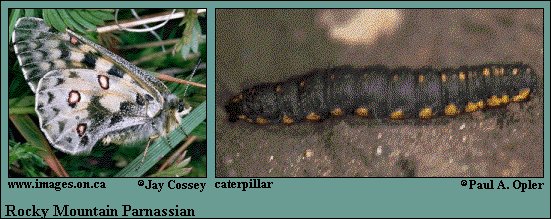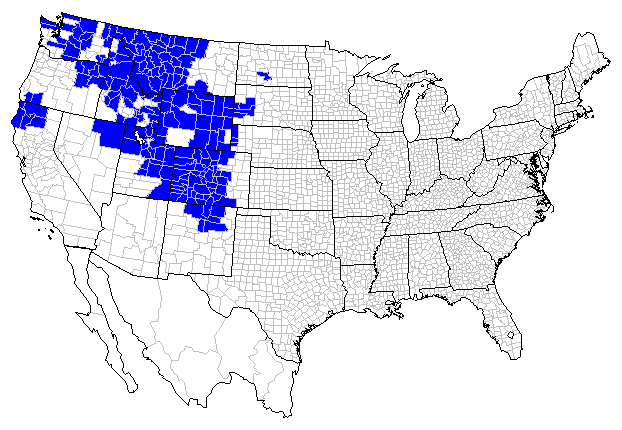 |
 

 |



Rocky Mountain Parnassian (Parnassius smintheus Doubleday)
Wing span: 1 3/4 - 2 1/2 inches (4.5 - 6.4 cm).
Identification: Antenna has alternate black and white rings. Upperside of forewing of females and most males with 2 red or yellow spots beyond the cell. In some males these spots are black.
Life history: Males patrol close to the ground for receptive females. Females lay eggs singly on almost any surface. Caterpillars feed on leaves and occasionally flowers and fruits. Hibernate as eggs.
Flight: One flight June-August.
Caterpillar hosts: Many species of stonecrop (Sedum) in the Crassulaceae family.
Adult food: Nectar from flowers of Sedum and Asteraceae family.
Habitat: Open forests, meadows, grasslands.
Range: From New Mexico north along the Rocky Mountains and into southwest Alaska.
Conservation: No populations are of conservation concern.
Management needs: None noted.
References:
Scott, J. A. 1986. The butterflies of North America. Stanford University
Press, Stanford, Calif. 583 pages, 64 color plates.
Tilden, J. W. 1986. A field guide to western butterflies. Houghton-Mifflin Co.,
Boston, Mass. 370 pages, 23 color plates.
Author: Jane M. Struttmann

